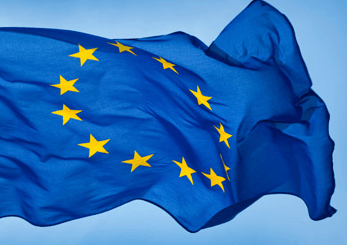
Preamble: In an era marked by geopolitical fragmentation, technological disruption, and climate urgency, trade policy must evolve beyond traditional liberalization. This article outlines how industrial strategy can be integrated into trade policy to bolster national resilience, promote sustainable development, and secure strategic autonomy. It recommends a balanced approach that leverages global cooperation while safeguarding domestic capabilities.
In the post-World War II era, many countries adopted protectionist measures to nurture nascent industries, leading to the rise of import substitution industrialization (ISI) strategies. Nations such as South Korea and Taiwan leveraged ISI policies to develop robust industrial bases, transitioning from agrarian economies to leading manufacturers.
However, the late 20th century witnessed a paradigm shift towards trade liberalization and market-oriented reforms, epitomized by the establishment of the World Trade Organization (WTO) in 1995. This period saw a reduction in tariffs and non-tariff barriers, promoting global trade and investment flows. Despite these liberalization trends, the strategic management of industrial policy never fully disappeared but rather evolved to adapt to the changing global economic environment.
The resurgence of industrial strategy in recent years is driven by several key factors. Firstly, the digital revolution and the advent of Industry 4.0 have necessitated new approaches to industrial policy. Advanced technologies such as artificial intelligence (AI), robotics, and the Internet of Things (IoT) are transforming production processes and value chains, demanding strategic interventions to harness these innovations.
Secondly, the COVID-19 pandemic underscored the vulnerabilities of global supply chains, prompting nations to reassess their industrial capabilities and reduce dependence on foreign suppliers. This renewed focus on industrial self-sufficiency and resilience is reshaping trade policies worldwide.
Lastly, geopolitical tensions and the rise of economic nationalism are influencing trade dynamics. The US-China trade war, Brexit, and regional integration efforts like the African Continental Free Trade Area (AfCFTA) are compelling countries to recalibrate their industrial strategies to navigate these complex geopolitical landscapes.
Key Components of Modern Industrial Strategy
Strategic Sectors and Technological Innovation
Modern industrial strategies prioritize strategic sectors that hold significant potential for economic growth and technological leadership. These sectors often include advanced manufacturing, renewable energy, biotechnology, and digital industries. Governments are increasingly investing in research and development (R&D) to drive innovation and competitiveness in these areas.
For instance, the European Union’s Horizon Europe program allocates substantial funding for R&D in critical technologies, aiming to foster innovation and technological sovereignty. Similarly, China’s Made in China 2025 initiative focuses on upgrading its industrial base and achieving self-reliance in key sectors such as semiconductors and AI.
Human Capital Development
A skilled workforce is fundamental to the success of any industrial strategy. Countries are investing in education and vocational training programs to equip their labor force with the necessary skills for the digital economy. Initiatives such as Germany’s dual education system, which combines classroom learning with hands-on industrial training, serve as models for effective human capital development.
Furthermore, lifelong learning and continuous skill upgrading are becoming essential as technological advancements render certain skills obsolete. Governments are promoting reskilling and upskilling programs to ensure that workers remain competitive in an evolving job market.
Infrastructure and Digital Connectivity
Robust infrastructure and digital connectivity play pivotal roles in facilitating industrial growth, with special economic zones (SEZs) often serving as focal points for investment and development. These zones, designated by governments to offer incentives and streamlined regulatory frameworks, attract both domestic and foreign investors, fostering economic activity and technological advancement.
One such notable example is the Tatu City SEZ in Kenya, strategically positioned to serve industries seeking a competitive edge in the evolving global market. Situated near major transportation networks and equipped with modern infrastructure, including reliable energy systems and digital connectivity, the Tatu City SEZ presents an attractive opportunity for businesses aiming to integrate into global value chains.
Moreover, the regulatory environment within SEZs like the Tatu City SEZ by Rendeavour is tailored to support industrial growth, offering incentives such as tax breaks, simplified administrative procedures, and access to skilled labor. These measures not only encourage investment but also promote innovation and competitiveness within key sectors like advanced manufacturing, renewable energy, and digital industries.
Regulatory Frameworks and Business Environment
A conducive regulatory environment is essential for fostering industrial development. Governments are streamlining regulations, reducing bureaucratic red tape, and providing incentives for businesses to invest in strategic sectors. Additionally, protecting intellectual property rights (IPR) and ensuring data security are critical for promoting innovation and attracting foreign investment.
The United Arab Emirates (UAE), for example, has implemented business-friendly reforms and established free zones with attractive incentives to draw international companies and talent. Such measures create a dynamic business environment that supports industrial growth and diversification.
Sustainability and Green Industrial Policy
The transition to a low-carbon economy is an integral component of modern industrial strategy. Governments are adopting green industrial policies to promote sustainable practices and reduce environmental impact. These policies include support for renewable energy, energy efficiency, and the circular economy.
The European Green Deal exemplifies this approach, aiming to make Europe the first climate-neutral continent by 2050. The deal encompasses a wide range of measures, including carbon pricing, green finance, and investment in clean technologies, to drive sustainable industrial transformation.
Strategic Imperatives Driving Industrial Strategy
Economic Resilience and Self-Sufficiency
The COVID-19 pandemic highlighted the risks associated with over-reliance on global supply chains. As a result, many countries are prioritizing economic resilience and self-sufficiency in their industrial strategies. This involves diversifying supply sources, building strategic reserves, and enhancing domestic production capabilities.
Japan’s policy of encouraging firms to reshore production and diversify supply chains is an example of efforts to bolster economic resilience. Such strategies aim to mitigate supply chain disruptions and ensure the availability of critical goods and services.
Technological Leadership and Innovation
Technological leadership is a key driver of economic competitiveness in the 21st century. Nations are striving to become leaders in emerging technologies such as AI, quantum computing, and biotechnology. This involves not only investing in R&D but also creating innovation ecosystems that foster collaboration between academia, industry, and government.
The United States, through initiatives like the National AI Initiative Act, is investing heavily in AI research and development to maintain its technological edge. Similarly, South Korea’s focus on digital innovation and smart manufacturing underscores the importance of technological leadership in its industrial strategy.
Geopolitical Considerations
Geopolitical dynamics significantly influence industrial strategy and trade policy. The strategic competition between the United States and China, for instance, is driving both countries to bolster their industrial capabilities and reduce technological dependencies. Trade policies are increasingly being used as tools of geopolitical influence, shaping global value chains and alliances.
The EU’s strategic autonomy agenda reflects its ambition to reduce dependence on foreign technologies and enhance its geopolitical clout. By strengthening its industrial base and technological sovereignty, the EU aims to assert its position in the global geopolitical arena.
Inclusive and Sustainable Development
Inclusive and sustainable development is a central tenet of modern industrial strategy. Governments are focusing on creating economic opportunities for all segments of society, addressing regional disparities, and promoting social equity. Additionally, sustainable development goals (SDGs) are being integrated into industrial policies to ensure long-term environmental and social sustainability.
The writer is an award-winning “growth and turnaround” business leader with nearly two decades of multi-industry expertise across Europe, the Middle East and Africa. Specialized in Upstream financial Advisory, International Trade & Development, Economic Integration & Digitalization, Industrial Ecosystems & Special Economic Zones
The post Finance, Economy & Trade with Richmond Kwame Frimpong: Industrial strategy in trade policy: Navigating new frontiers appeared first on The Business & Financial Times.
Read Full Story











Facebook
Twitter
Pinterest
Instagram
Google+
YouTube
LinkedIn
RSS